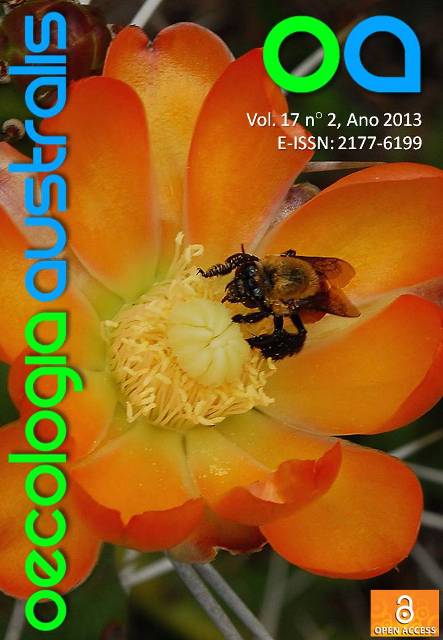ALTITUDINAL GRADIENTS: CONCEPTS AND IMPLICATIONS ON THE BIOLOGY, THE DISTRIBUTION AND CONSERVATION OF ANURANS
Keywords:
Altitude, Amphibia, distribuição altitudinal, ecologia, riqueza de espéciesAbstract
The understanding of the patterns of species richness along environmental gradients has been the focus of many studies of ecology and biogeography in the last decades. Among these, most of the cases of distribution of species richness along altitudinal gradients show a trend for species richness to peak at intermediate altitudes or for a linear decline in richness with increasing elevation. Due to their high diversity of species and the fact that they occupy a wide altitudinal range in the areas where they occur, amphibians have a high potential as model organisms for this type of study. Thus, this study aimed to examine the current state of knowledge on the biology, distribution and conservation of amphibians along altitudinal gradients based on research conducted using the databases of Web of Science, Scielo, and Google Scholar, as well as the reference lists of articles found. The implications of some environmental variables (ex. availability of water bodies, temperature, oxygen) on the biology of amphibians were discussed. We recorded a total of 30 articles on the distribution of species of anuran amphibians along altitudinal gradients. Most studies on the altitudinal distribution of anurans showed that there is a decrease in the number of species at higher altitudes, with some showing a peak of diversity at intermediate altitudes. Most studies which tested the Rapoport effect showed that anurans do not tend to follow that pattern. In Brazil, only two studies considered the effect of altitude on the distribution of amphibians. The restricted altitudinal range in those studies associated with the effect of distant areas and different years of sampling still limits the understanding of the distribution of anuran species along altitudinal gradients in Brazil. In fact, there is currently no published study with an experimental design designed to evaluate this type of question for anurans in Brazil, despite the great potential of the country both in terms of anuran diversity and in the availability of localities with relatively wide altitudinal range.Downloads
Download data is not yet available.
Downloads
Additional Files
Published
2017-02-21
Issue
Section
Articles


